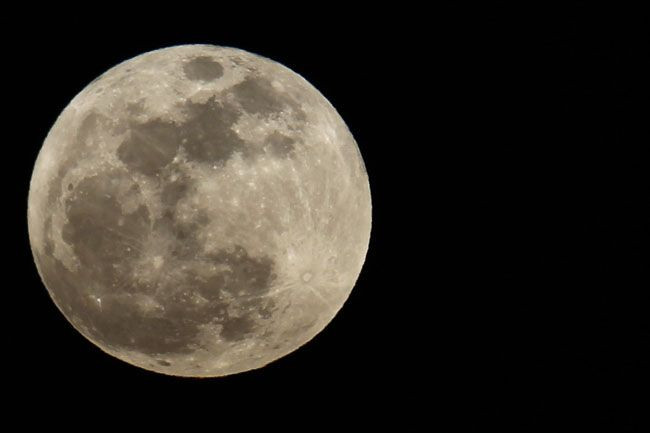
Capping off a year of amazing celestial phenomena, the final full moon of 2012 rises tonight. Known as the "long-night's moon" because it is the closest full moon to the winter solstice, when nights are the longest, Dec. 28's full moon will be visible in the sky longer than any other this year, according to Space.com.
For instance, from New York moonrise on Thursday occurred at 4:17 p.m. EST and the moon sets at 7:12 a.m. this morning, so, the full moon will be in the sky for a long time: 14 hours and 55 minutes. Technically, the moon was most full at 4:21 EST this morning, but will appear full to the eye all day and night.
Tonight's full moon is also unique for yet another reason; it's the 13th full moon of the year.
Slate breaks down the math of how this all works:
"So, you might expect to get 12 full Moons every year, and you'd be close. A year is about 365.25 days, so there should be 12.37 full cycles of lunar phases a year (dividing 365.25 days per year by 29.531 days per lunar cycle), which means 12 full cycles-so 12 full Moons-plus a little bit, about a 1/3 of a cycle more.
But that extra bit is important. That means the cycle of phases and the length of the year don't line up. At the end of one year you have about 1/3 of a cycle left over. By the end of the second year, you have twice that much, or 2/3. That means the third year has a full cycle left over, so you get a 13th set of Moon phases for free.
Here's another way to think of it: If we had exactly 12 cycles per year, we'd have 36 cycles every three years. But really we have 3 x 12.37 = 37.1, so we get an extra cycle every three years or so."
Many believe a full moon is the best time to see it with the most clarity and detail using binoculars or a telescope, but according to Space.com, while the moon might be dazzlingly bright during a full moon phase it actually appears flat and one-dimensional. For observers to catch more detail the best time to watch the moon is later this weekend, or early next week.
"As the moon wanes to its gibbous phase, and then to last quarter, those lunar features close to the terminator -the variable line between the sunlit and darkened portions of the moon - will appear to stand out in sharp, clear relief," Space.com reports.
© 2025 Latin Times. All rights reserved. Do not reproduce without permission.




